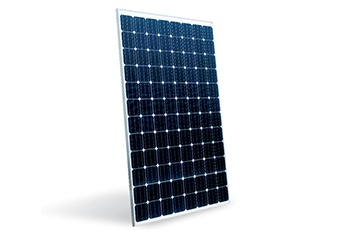|
Technology |
Monocrystalline |
Polycrystalline / Multicrystalline |
|---|---|---|
| Image |  |
     |
| Solar cell image |      |
     |
| Visual identification | Monocrystalline solar panels are quite easily recognizable by an external even coloring and uniform look and usually a black or deep dark blue color of the solar cells.
Further they usually have the small cut on the corners of the solar cells resulting in a Diamond pattern between the cells. |
Poly or multicrystalline solar cells have a dark blue to medium blue color. The cells are square shaped and hence give a more filled appearance in the solar modules. |
| Technology generation | Older technology.
Proven in Solar application since nearly 40 years Used very commonly worldwide for other applications apart from solar, like Semiconductor, etc.
|
Newer technology as compared to Mono in existence since nearly 20 years. |
| Type of silicon | Silicon Ingots are drawn in single crystal structure using the Czochralski process, hence the name Mono crystalline. | Multi crystalline technology involves random crystal formation and hence the name POLY or MULTI because it consists of multiple crystals to make a single Ingot. |
| Efficiency of module
|
Due to the very high purity of the solar clels, Mono solar modules have the Highest amongst crystalline silicon and all commercially used solar photovoltaic technologies.Typically monocrystalline modules reach efficiencies of 16 to 18.2%
Typically monocrystalline modules reach efficiencies of 16 to 18.2% |
Due to the random crystal properties of the solar cells, Poly solar modules have a lower efficiency as compared to monocrystalline solar module with efficiencies ranging from 13 to 17.5% |
| Temperature effect
|
Although the theoretical temperature coefficients are nearly similar for both technologies.
However, practically monocrystalline will generally deliver a better energy output in locations with an average temp upto 35 deg C. For locations above 35 deg C they tend to show lower energy generation as compared to a similar capacity polycrystalline modules. |
Although the theoretical temperature coefficients are nearly similar for both technologies.
However, practically polycrystalline modules generally deliver a better energy output in locations with average temp above 35 deg C. Thus making them more suited to Tropical or hot regions. |
| Annual Degradation | Solar modules usually have an annual 0.7% degradation.
Both technologies have same kind of degradation properties in typical scenarios. However Monocrystalline technology has shown to practically have lower degradation in field as compared to poly / multi modules. In fact many Mono modules installed since 40 years are still delivering energy output well. |
Solar modules usually have an annual 0.7% degradation.
Both technologies have same kind of degradation properties in typical scenarios. However Monocrystalline technology has shown to practically have lower degradation in field as compared to poly / multi modules. In fact many Mono modules installed since 40 years are still delivering energy output well. |
| Space requirement | Lesser space required to fit more capacity.
Monocrystalline modules are ideally suited for locations which have a shortage of space. One can fit more KWp for the same area as compared to poly / multi. Typically require about 6 to 9 sq. Mtr per KW |
More space required as compared to mono to fit same capacity.
Typically require about 8 to 14 sq. Mtr per KW |
| Warranty | 25 years | 25 years |
| Price | Due to the silicon ingot and cell process and technology, Monocrystalline solar modules are costlier amongst the two crystalline silicon technologies by about 14 to 25% | Since the ingot and cell technology allows a lower cost of production, hence polycrystalline solar modules are cheaper amongst the two. |
| Conclusion | Mono-crystalline solar modules are most suitable for below scenarios :
Very critical applications Eg. Telecom / Oil & Gas / Offshore / Remote areas / Hilltops / etc Further they are more suited for locations having a lower annual average temperature |
Poly-crystalline solar modules are most suited for locations having a higher annual average temperature or Tropical / Hot / Desert conditions.
Further for most rooftop / power plant / general applications Polycrystalline modules deliver a better Return on investment. |
[/fusion_text][/fusion_builder_column][/fusion_builder_row][/fusion_builder_container]

